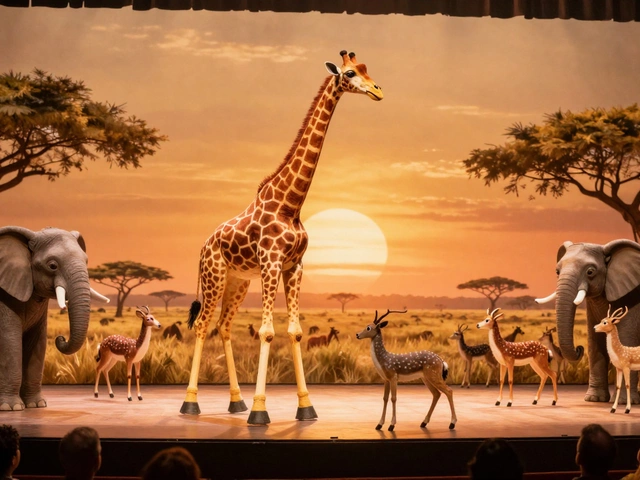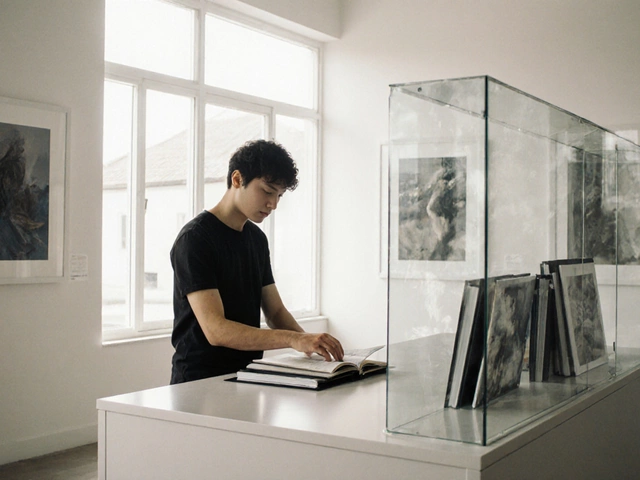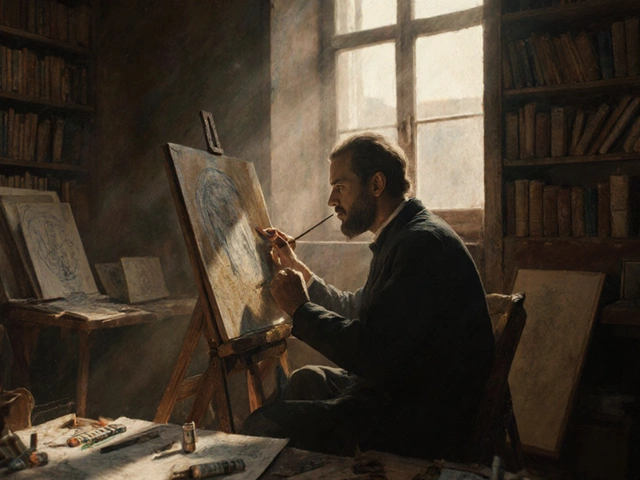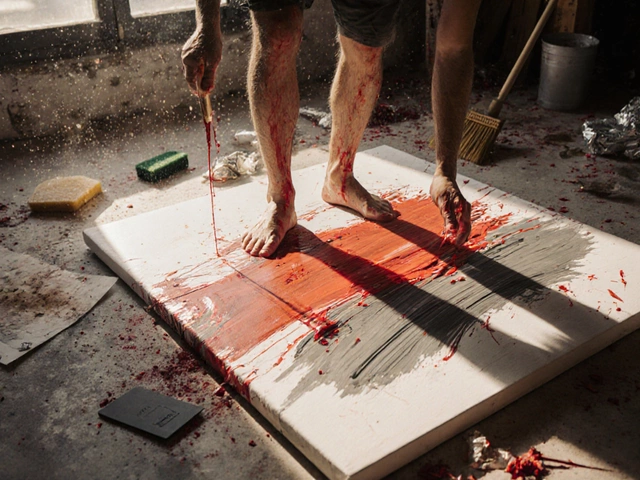When wandering through a gallery, we often encounter figures and forms that challenge our perception—sculptures that seem to breathe life into mere material. This artistic endeavor raises a fundamental question: is sculpture an art form, a design process, or perhaps both?
The debate may seem academic, yet it holds profound implications. Art is often seen as an expression, a language of emotions and ideas conveyed through various media. Design, meanwhile, tends to focus on function, planning, and the aesthetic arrangement of elements for practical purposes.
In examining sculpture, we delve into its rich historical roots, its transformation through the ages, and its role today. Sculptors carve and mold, shaping narratives or functionality, and often, the boundaries between art and design blur. With this blend, sculptures not only adorn our spaces but influence our thinking and living environments.
- Defining Sculpture: Art Vs. Design
- Historical Perspectives on Sculpture
- Material and Technique: The Heart of Sculpture
- Sculpture in the Modern World
- Interpreting Intention and Context
- The Future of Sculpture: Merging Boundaries
Defining Sculpture: Art Vs. Design
When contemplating the essence of sculpture, it becomes essential to understand how it has historically straddled the delicate line between art and design. Art is primarily seen as an expression of concepts and emotions, capturing the intangible through visual form. Sculpture, in its purest sense, achieves this by embracing three-dimensionality, inviting the viewer to engage not only with what is visible but with what is implied in shadows, form, and space. On the other hand, design is fundamentally about practicality—it involves conceptualizing spaces or objects for functional use. Yet, what distinguishes sculpture is its ability to merge utility and expression seamlessly. An exquisite bust or an abstract installation may be perceived as purely artistic due to its apparent lack of utility, but consider the design elements at play: balance, proportion, texture—all deliberate choices aiming to create harmony or discord.
Historically, the debate surrounding sculpture as art or design can be traced back to the Renaissance era, when artists like Michelangelo and Donatello were revered as both sculptors and designers. Their works, which include the sublime 'David' and the intricate 'Gattamelata', exemplify a mastery of form and detail that echoes design through their meticulous planning and execution. In the contemporary art world, the sculpture continues to evolve, with artists like Anish Kapoor and Jeff Koons challenging traditional boundaries. These figures craft pieces that blur the lines between art and design—such as Kapoor’s monumental, oftentimes utilitarian public sculptures that alter how we perceive space and volume. As such, these artworks compel us to question: can function not reside within beauty?
What truly sets a sculpture apart is how it interacts with its environment and audience. Unlike static, two-dimensional paintings, sculptures invite engagement—they demand a viewer to walk around, to ponder from different angles. This interaction mirrors a dynamic design process, where the end-user’s experience and perception are paramount. Today’s sculptors often incorporate elements of industrial design, using materials or techniques traditionally reserved for craft and utility. Consider the use of steel and glass, often synonymous with urban architecture, now prevalent in modern sculptures, reflecting an ongoing fusion of these creative disciplines. "Art begs you to see beauty in everything; design asks you to experience it," wrote a respected critic, capturing the mesmerizing dual nature of sculpture.
The intersection of sculpture, art, and design is a matter of both culture and time. Different societies and eras have influenced what sculpture represents, emphasizing either its functional or expressive potential. In ancient Greece, sculpture served religious and commemorative purposes, while in today’s technological age, digital fabrication techniques challenge artists to redefine sculpture itself. Will a 3D-printed model, designed on a computer, hold the same artistic value as a hand-chiseled statue? The ongoing dialogue in artistic circles remains vibrant and evolving, much like life itself—ever-shifting between the tangible and the ethereal. It's precisely this fluidity that makes sculpture such a compelling blend of art and design, offering endless possibilities for exploration and innovation.
Historical Perspectives on Sculpture
Sculpture, like any art form, carries the stories and cultural signatures of the eras it has traversed. Historically, sculpture has been a medium of narrative for civilizations long before written language could capture the intricacies of human experience. A journey through ancient cave sculptures reveals early man's attempts to communicate with their gods, expressing fear, reverence, and understanding of the natural world. As societies evolved, sculptures became emblematic of power and divinity. The Egyptians, for instance, perfected the craft within their pyramids, with graceful yet stoic forms intended not merely for aesthetic pleasure but as eternal guardians of the afterlife.
The Greeks later revolutionized this art form, introducing naturalism and idealized human forms during what is known as the Classical period. Their sculptures were meticulous in detail, capturing the human physique in its most glorified state. The Romans inherited much from Greek traditions but leaned toward realism, capturing the veracity of individual features. This divergence reflects a shift from the glorification of gods to the celebration of humans and their earthly narratives. Across the world, in Asia, one finds the intricate stone carvings of Angkor Wat and the serene countenance of the Buddha chiseled into rock, testifying to the diverse religious philosophies that motivated these grand creations.
"Sculpture is the art of the intelligence," noted the renowned Pablo Picasso, indicating the thoughtful consideration that goes into transforming raw materials into meaningful form.
As time marched on, the Middle Ages infused sculpture with Gothic detail, creating ethereal, otherworldly semblances that adorned cathedrals and churches, inviting the divine into human spaces. The Renaissance, known for its iconic revival in arts and humanities, imbued sculpture with renewed vigor. Individuals like Michelangelo tasked marble with manifesting spiritual and philosophical humanism, producing works such as 'David' that spoke volumes of artistic mastery and human aspiration. Moving to the Baroque period, sculpture broke free from static forms to embrace dynamism and emotion, with artists like Gian Lorenzo Bernini crafting works so alive that they seem ready to leap from their pedestals.
With the onslaught of industrialization and modernity, sculpture underwent radical transformations, responding to a world that was expanding technologically and shrinking globally. The 20th century saw sculptors like Auguste Rodin and Constantin Brâncuși stripping down forms to their essence, paving the way for abstract and modern expressions. This era began to redefine sculpture, considering industrial materials like steel and glass, and inviting artists such as Barbara Hepworth to explore space and form in innovative ways. Through the ebb and flow of history, sculpture has perpetually adapted, responding to the shifts in material, societal norms, and philosophical needs of its time.

Material and Technique: The Heart of Sculpture
The journey of a sculpture begins with the choice of material, which is fundamental to the creation and perception of any piece. The tactile reality of material determines the essence of the sculpture, influencing its presence and impact. Traditional materials such as marble, bronze, and wood have been staples since antiquity, with each offering unique qualities that affect durability, texture, and finish. Marble, renowned for its elegance and capacity for fine detail, has allowed artists like Michelangelo to create timeless works. The cool, hard surface embodies beauty and permanence, inviting viewers to appreciate both form and technique.
Bronze, with its strength and capability for exquisite detailing, revolutionizes sculptural endeavors through the lost-wax casting method. This liquid metal captures the intricate nuances that artists envision, providing stability and elegance. Techniques employed in working with these materials also shape the sculpture; carving, chiseling, and casting, each requiring distinct skills and tools, contribute to the work's final form. As Henry Moore, a notable English sculptor, once reflected, bronze could “achieve great strength and yet flow into the finest detail" from the artist's imaginative grasp.
"There is no art without cast," Moore often stated, highlighting the centrality of material choice and technique in the sculptural process.
Modern times witness an evolution in both material and technique. Contemporary sculptors experiment with industrial materials such as steel and concrete, while others embrace innovation through recycled materials, plastics, and even digital media. This reflects a shift towards a more sustainable and diverse artistic expression. Techniques have also advanced; the advent of 3D modeling and printing enables precise replication and exploration beyond traditional tools. These modern techniques expand creative possibilities, allowing for complex designs once thought impossible.
Material influences not only the sculpture's aesthetic but its conceptual implications too. The tactile sensation, visual appeal, and even the sound of a material can communicate the artist's message. A sculpture crafted of raw timber might evoke a sense of organic growth or natural resilience, while gleaming metal surfaces could signify industrial strength or technological prowess. Hence, the dialogue between art and design is profoundly affected by material choice.
Understanding the heart of sculpture involves not only acknowledging these materials but also appreciating how they interact. Sculptors often combine different materials to contrast textures, colors, and forms, enhancing the depth and narrative of their work. Exploring this interaction highlights how intent and medium converge to transform simple materials into works of art or design. This complex interplay stands as a testament to the sculptor's skill and vision, showcasing the transformative power of their craft.
Sculpture in the Modern World
The landscape of sculpture today is a vibrant and dynamic tapestry that reflects a confluence of traditions and radical innovations. In the modern world, sculpture is not confined to galleries or gardens; it becomes an integral part of the urban fabric, engaging with public spaces in unprecedented ways. Contemporary sculptures often challenge conventions, merging art and design to explore new possibilities. The materials used by today's sculptors extend beyond stone and metal, embracing the likes of plexiglass, digital media, and even living plants.
Sculpture has increasingly leaned towards interactive forms, inviting viewers not just to observe, but to engage. Take, for instance, the kinetic installations of artists such as Theo Jansen, whose Strandbeests are walking structures powered by the wind. These creations blur the line between art and engineering, effectively redefining what sculpture can be. An interview with Jansen revealed his belief that art should be a living entity, evolving with its environment.
The rise of technology has vastly impacted the domain of modern sculpture. 3D printing has revolutionized how artists conceptualize and create their works, eliminating traditional constraints and enabling intricate designs that might be impossible to achieve by hand. An increasing number of sculptors are incorporating motion with technology, crafting pieces that react to environmental stimuli or human presence, thereby creating an evolving dialogue with audiences.
Aside from technological advancements, the thematic concerns of modern sculpture have significantly broadened. No longer solely aesthetic, sculptures often engage with pressing social issues like climate change, identity, and politics. They have become vehicles for activism and change, catalyzing conversations through artistic expression. Renowned sculptor Ai Weiwei, for example, uses his art to challenge political regimes and highlight human rights issues, saying, "Art is about aesthetics… politics is about something deeper than just the surface."
"Sculpture is a parable: its form can sometimes appear, disappear, and reappear." – Henry Moore
Public installations have gained prominence, transforming cityscapes and altering the way we perceive urban areas. Consider Anish Kapoor's "Cloud Gate" in Chicago, which not only attracts tourists but also becomes a center for cultural exchange and diversity. This kind of work illustrates how sculpture serves as a bridge between individuals and community identities, reshaping spaces into cultural landmarks.
As the boundaries of what constitutes a sculpture blur, the field continues to explore environmental and ecological themes. Eco-sculptors incorporate sustainable practices into their work, using recycled materials to promote environmental awareness. The future of sculpture, therefore, looks increasingly interdisciplinary and integrative, poised to further bridge the gap between art and design, society and environment.
| Year | Innovative Material |
|---|---|
| 2015 | Upcycled Plastics |
| 2020 | Biodegradable 3D Filaments |
| 2023 | Living Moss and Plants |
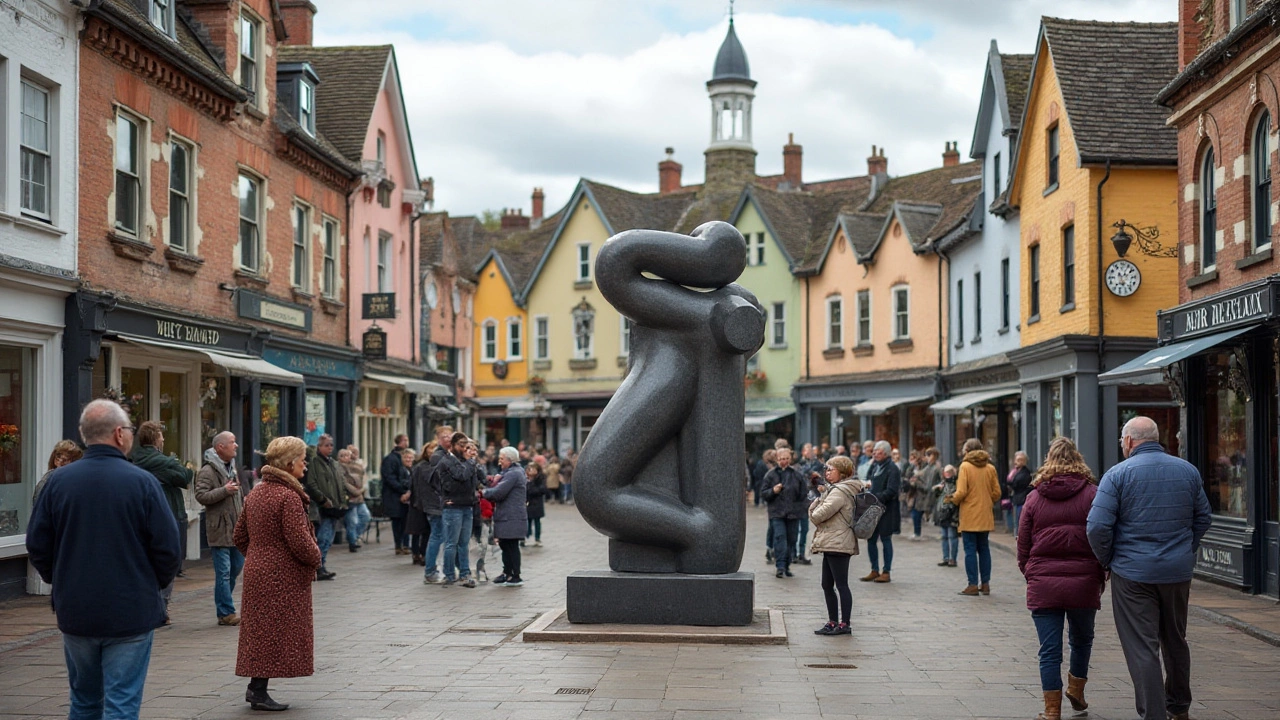
Interpreting Intention and Context
When entering the complex realm of sculpture, one of the most riveting aspects to consider is the intention behind each piece and the context in which it is presented. Artists sculpt with deeply rooted personal philosophies, and their objectives can range vastly, from conveying abstract emotional states to making pointed socio-political statements. The public perceives these forms in a multitude of ways, colored by personal experiences, cultural backgrounds, and current societal trends. Hence, understanding the artist's intention often requires diving into the backstory of the work, the creative process, and any messages hidden in the material itself.
Take, for instance, the works of Auguste Rodin, often celebrated as one of the pioneers of modern sculpture. Rodin’s masterpieces, such as "The Thinker," manifest a kind of expressive realism that forces an introspective dialogue about human nature and philosophical pondering. In the context of the late 19th century, this introspection also reflects the growing awareness of industrial society's impact on individual feeling—an interplay that showcases art as a mirror reflecting societal evolution. Hence, to truly appreciate a sculpture, understanding the era's cultural milieu and what spurred the artist into imagination can deeply enrich the viewer’s experience.
Modern architecture often treats design as both aesthetic and practical, with pieces at times standing as political or environmental statements. For example, contemporary sculptures adorned in city squares may serve dual purposes as public design pieces that enhance landscape or as commemorative art pieces that carry historical significance. Consider Maya Lin's Vietnam Veterans Memorial in Washington D.C. Its reflective surface and understated presence invite contemplation and remembrance among visitors, a poignant interaction between the work’s intention and its place in public consciousness. Lin’s design incorporated subtlety and respectful remembrance, allowing context to enrich each visitor’s personal encounter with loss and memory.
"Art is not what you see, but what you make others see." — Edgar Degas
Digging deeper, the context in which a sculpture is installed may alter our perception and interpretation in multifaceted ways. A piece displayed in a bustling urban park could be viewed as an embodiment of human resilience and adaptation to modern life, while the same work placed within a solitary natural setting might evoke themes of isolation or harmony with nature. The dialogue between intention and context becomes a delicate dance, where meaning can shift and expand depending on where and how the piece is situated. Conceptual artist Richard Serra exemplifies this integration beautifully through his site-specific works, where location and form become inseparable elements of the narrative.
The evolving interpretation of sculptures as either art or design depends heavily upon an observer's context, opening the door to numerous possibilities and dialogues. This complexity underlines the significance of both the creator's intended message and the observer’s subjective interpretation. By engaging in conversations inspired by these works, we yet again confirm sculpture as a dynamic and influential force bridging the domains of society, creativity, and human insight.
The Future of Sculpture: Merging Boundaries
As the world around us evolves at an unprecedented pace, so too does the realm of sculpture. Traditional techniques are blending with cutting-edge technology, and this fusion is reshaping what we perceive as both art and design. Artists today have access to an incredible array of tools, from 3D printing to digital modeling, which allow them to create intricate details and replicate complexity with ease. This technological revolution permits not only the expansion of artistic expression but also the democratization of sculpture, enabling artists around the globe to bring their visions to life with greater accessibility and affordability.
Another fascinating trend is the intersection of design principles with artistic intent. Increasingly, sculptures are conceived with dual purposes: as aesthetic pieces and functional objects. Urban landscapes are dotted with installations that serve as furniture, shelters, or interactive experiences, blurring the line between utility and beauty. This versatility in function and form speaks to the adaptability of sculpture in addressing modern-day needs and sensibilities. Society's growing emphasis on sustainability and eco-friendly solutions also plays a role, with creatives using recycled materials to craft works that are both striking and conscious of environmental impact.
The future of sculpture would also be incomplete without acknowledging the role of cultural exchange. With greater connectivity and globalization, there's a cross-pollination of ideas that enriches the sculptural narrative. Artists draw from international influences and ancestral traditions alike, welding them into pieces that reflect a tapestry of cultural stories. This mingling encourages dialogue about identity, heritage, and the future. Noted sculptor Antony Gormley once remarked,
"The future lies in the spaces between things, in objects that are neither solely functional nor purely aesthetic, but that invite participation and interaction.”Such perspectives highlight the potential that lies in sculpture as a dynamic medium.
Considering these developments, it's evident that the boundaries between art and design will continue to merge in sculpture's future. Educational environments are adapting as well, with interdisciplinary approaches that encompass art, design, and technology. Workshops and studios are becoming melting pots of creativity where engineers work alongside artists, sparking unprecedented innovation. Moreover, the rise of immersive and augmented reality provides new dimensions for engagement, allowing audiences to experience sculptures beyond physical constraints. The sculpture of tomorrow isn't confined to galleries or physical spaces; it's poised to enter new virtual dimensions, offering limitless possibilities for how we experience and share art.
Crucially, this evolution prompts ongoing dialogue about the role of the sculptor, the artist's responsibilities in a rapidly changing world, and how they can use their medium to inspire change and provoke thought. As these boundaries merge, sculpture becomes a powerful tool for storytelling, advocacy, and transformation. The journey of sculpture into the future promises to be as unpredictable as it is exciting, with innovations that will continue to challenge and delight those who experience them.


